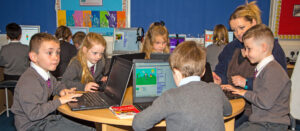Computing at Northstead Community Primary School
Leader: Shaun Hopper (Headteacher – temporary leader)
Computing at Northstead – A Guide for Parents and Carers
At Northstead Community Primary School, we want your child to grow in confidence, creativity, and problem-solving through computing. We use the Teach Computing scheme, which is fully aligned with the National Curriculum and gives every child the chance to build real digital skills in a fun and practical way.
What is computing like at Northstead?
Clear Progression: Children follow a step-by-step learning journey where they build on what they’ve learned each lesson.
Hands-On Learning: Lessons are full of opportunities for your child to use computers, try out new tools, and solve problems.
Growth Mindset: Mistakes are part of learning! Children are encouraged to keep trying, reflect, and improve.
Inside a Computing Lesson
Each lesson includes:
Learning Objectives: Clear goals shared with the class at the start.
Recap Questions: Teachers ask review questions to help children remember past learning.
Vocabulary: Key words are introduced and explained, sometimes with pictures, to support understanding.
Practical Work: Children explore, create, and problem-solve—often in pairs or groups, but with chances to show what they can do on their own too.
Discussions and Questions: Teachers guide deep thinking through thoughtful questions and support every child’s voice.
How is Computing assessed at Northstead?
- No Tests Needed: Learning is checked through informal discussions and observation, not formal testing.
Live Feedback: Teachers walk around, support children as they work, and give feedback right away.
Adaptable Lessons: Teachers tweak the next lesson based on how well the class understood the last one.
Final Note
At Northstead, we believe computing is about more than just using a computer — it’s about learning how to think creatively, solve problems, and grow through exploration. With your support at home, we can help children become confident, capable digital learners.
If you ever want to know more about your child’s computing learning, feel free to ask their teacher or explore Teach Computing.









Examples of computing in action at Northstead are shown below…

At Northstead, we use Teach Computing to teach the computing curriculum. A short introduction to this is below…

